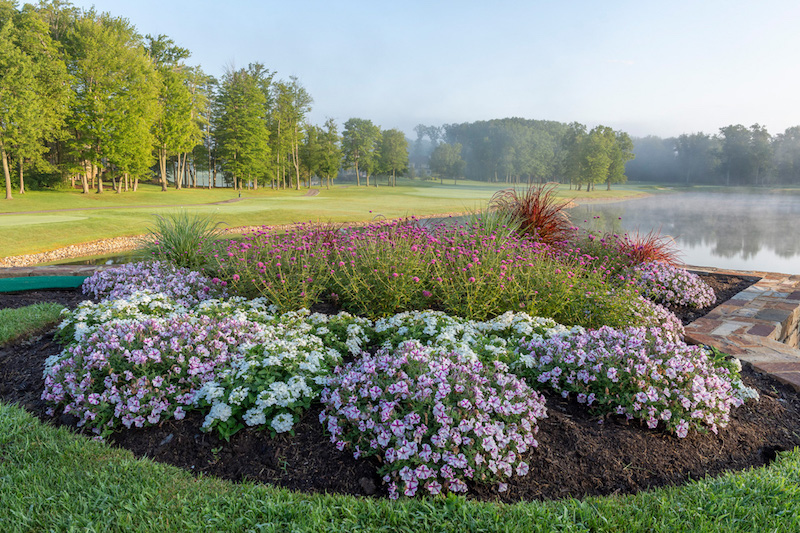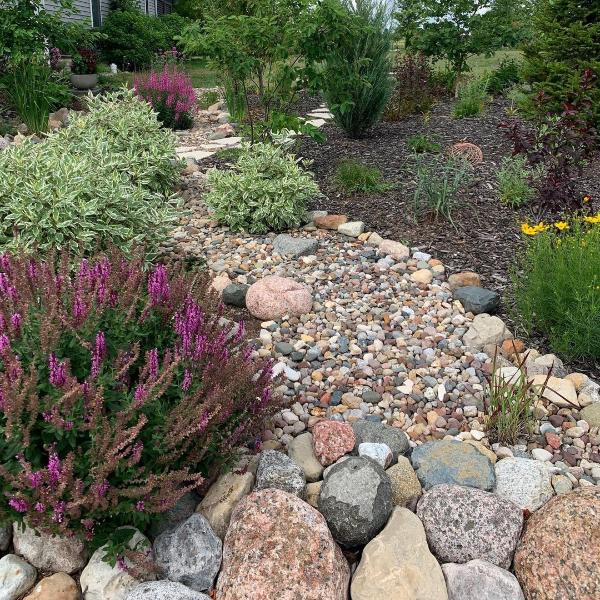4 Easy Facts About Hilton Head Landscapes Shown
4 Easy Facts About Hilton Head Landscapes Shown
Blog Article
Some Known Factual Statements About Hilton Head Landscapes
Table of ContentsAll About Hilton Head LandscapesThe 9-Second Trick For Hilton Head LandscapesThe Best Strategy To Use For Hilton Head LandscapesHilton Head Landscapes Can Be Fun For EveryoneThe Ultimate Guide To Hilton Head Landscapes7 Simple Techniques For Hilton Head LandscapesIndicators on Hilton Head Landscapes You Need To KnowThe Ultimate Guide To Hilton Head Landscapes
Type compatibility is likewise a major element of unity in designone or 2 strikingly different types are good for contrast and focus, yet usually all other kinds should have some similarities for an unified look. Structure describes just how crude or great the surface area of the plant or hardscape material really feels and/or looks.
Instances of plants with coarse structure consist of philodendrons, agaves, bromeliads, hollies, palms, and hydrangeas. Features that produce fine texture consist of tiny foliage; thin, strappy leaves (yards) or high, thin stems; little, dense twigs and little branches; long stems (creeping plants); and little, fragile flowers.
7 Simple Techniques For Hilton Head Landscapes
Most plants are medium structure, because they can not be referred to as having either rugged or great texture. They are identified by medium-sized fallen leaves with simple forms and smooth edges. The average-sized branches are not densely spaced neither extensively spaced, and the total form is normally rounded or mounding. Medium-textured plants work as a background to link and link the coarse- and fine-textured plants.

To make a room feel smaller sized, position the crude appearances along the external boundary and the fine appearances closest to the viewer. The information of the rugged structure makes the plants show up closer and makes the space feel smaller sized. The perceived texture of plants can likewise change with the range from the plant.
Hilton Head Landscapes Fundamentals Explained
Vibrant colors enhance the contrast and make the structure appear coarser, while soft shades can flatten texture. Hardscape with a crude texturesuch as really harsh rocks and bold, huge timberstends to make all plant product appear more average distinctive. Developers frequently create an appearance research (Number 8) on paper to help make a decision the arrangement of plant products.
Color in plant product and hardscape includes rate of interest and selection to the landscape. Shade is the most obvious element in the landscape and is usually the emphasis of many house owners; however, it is additionally the most temporary element, typically lasting only a few weeks a year for specific plants.
5 Easy Facts About Hilton Head Landscapes Explained
A basic description of the shade wheel consists of the 3 primaries of red, blue, and yellow; the three additional shades (a mix of two primaries) of green, orange, and violet; and 6 tertiary colors (a mix of one adjacent main and second shade), such as red-orange. Color theory describes the relationship of colors to every other and how they should be made use of in a structure.

Similar (in some cases called harmonious) color pattern are any kind of 3 to five shades that are nearby on the color wheel, such as red, red-orange, orange, yellow-orange, and yellow, or blue, blue-violet, and violet (Landscaping bluffton sc). The colors belong to every other since they normally consist of two primaries mixed to develop an additional and 2 tertiary colors, which means they share usual homes
Complementary shades are usually found naturally in blossoms; a typical set is yellow and violet. Color is discovered in the blossoms, vegetation, bark, and fruit of plants.
The Greatest Guide To Hilton Head Landscapes
Environment-friendly vegetation in all its various shades is the dominant color by amount, but various other shades capture focus a lot more readily due to their high contrast to the color environment-friendly. Color is likewise discovered in buildings, rocks, pavers, timber, and furnishings. Many colors in all-natural materials, such as rock and wood, are typically low-key and have a tendency to be variations of brownish, tan, and light yellow.
Colors have homes that can influence feelings, spatial understanding, light top quality, balance, and emphasis. Cool colors often tend to be soothing and should be used in areas for relaxation and tranquility.
Hilton Head Landscapes for Beginners
Cool shades often tend to decline and are viewed as being further away, making a room feel bigger. Shade can additionally be made use of to catch focus and straight sights.
Brilliant yellow, which has the highest possible strength, also has a high comparison with all other colors (usually explained as a "pop" of shade) and need to be made use of sparingly. A small amount of intense color has as much aesthetic weight as a huge quantity of a much more restrained or weak shade.
Similar (in some cases called harmonious) color pattern are any type of 3 to five colors that are nearby on the shade wheel, such as red, red-orange, orange, yellow-orange, and yellow, or blue, blue-violet, and violet. The colors belong per other since they generally include 2 primary colors blended to develop an additional and two tertiary shades, which implies they share typical residential or commercial properties.
All About Hilton Head Landscapes
They often tend to have high comparison between them. One of the most common sets are violet and yellow, red and green, and blue and orange. Complementary colors are frequently located normally in blossoms; a typical set is yellow and violet. Color is found in the blossoms, vegetation, bark, and fruit of plants.
Eco-friendly foliage in all its numerous shades is the dominant shade by quantity, yet read this post here other colors capture focus quicker as a result of their high comparison to the color green - landscapers in bluffton sc - https://h1tnhdlndscps.start.page. Color is also found in buildings, rocks, pavers, wood, and furnishings. Many colors in all-natural materials, such as rock and timber, are normally soft and have a tendency to be variants of brownish, tan, and pale yellow
The Ultimate Guide To Hilton Head Landscapes
Color is an important aspect for developing interest and range in the landscape. Colors have buildings that can impact emotions, spatial assumption, light top quality, balance, and focus. One building of shade is defined loved one to temperaturecolors appear to be amazing or cozy and can influence feelings or sensations. Trendy colors have a tendency to be calming and must be used in locations for relaxation and tranquility.
The "temperature" of colors can additionally influence the assumption of range. Great colors tend to recede and are perceived as being farther away, making a space really feel larger. Cozy colors often tend to advancement and are viewed as being more detailed, making an area feel smaller sized. Color can likewise be made use of to record focus and direct views.
As an example, bright yellow, which has the highest intensity, additionally has a high contrast with all other colors (usually described as a "pop" of color) and ought to be conserved. A small quantity of intense shade has as much aesthetic weight as a big amount of a much more restrained or weak color.
Report this page